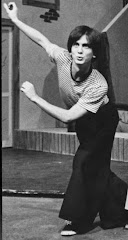There have been a few more deaths lately, if you can believe it, which were overshadowed by the
recent spate of
higher-profile demises. But they deserve a bit of a mention.

Arthur Ferrante
1921-2009

He was a classical pianist who entered Julliard at age 9. There he met the guy who would be his partner for 40 years, Lou Teicher. Their early concerts together focused on classical music, with the twist of the "duelling grand pianos" which became their signature. The "Grand Twins of the Twin Grands" eventually found their orchestrations of movie themes propelling them into pop stardom. They recorded over 150 albums, with 22 going gold or platinum; they sold over 90 million albums worldwide and gave over 5200 concerts before retiring 20 years ago. In the early 60s, they hit Billboard's Top Ten with their piano renditions o

f the themes from
The Apartment and from
Exodus, as well as "Tonight" from
West Side Story. They continued to record movie themes throughout the 60s, and ended the decade with another top ten smash, the instantly recognizable
Theme from Midnight Cowboy. I think my folks must have had a Ferrante and Teicher recording in their collection, as my mother and both my sisters played the piano. But I know my best friend from school, Robert, was a big fan and had many of their albums. While everybody else was listening to Creedance Clearwater Revival, Robert and I were listening to Ferrante and Teicher. No wonder we got beat up a lot. Teicher predeceased Ferrante, dying last year at age 83.
This gal died several weeks ago. Recognize her?

Crystal Lee Sutton
1940-2009
Well, you probably wouldn't. I didn't either. But one single moment in her otherwise non-descript life became an international iconic symbol. In 1973, she was a single mother of three, working in a textile mill in North Carolina for $2.65 an hour. She was spotted reading some union literature, and was fired. She went back to the factory floor to gather her belongings, and asked a co-worker for a Magic Marker. In her own words: "I grabbed it and I took a piece of pasteboard and I wrote the word UNION on it and, for some reason, I don't know why I did it, I climbed on the table and I just slowly turned the sign around. Everybody was in a state of shock and the machines started shutting down and everything got quiet. People started giving me the V sign." Sound familiar? Sally Field recreated that moment in Norma Rae, and won an Oscar.

When the movie was in pre-production, Sutton demanded creative control over the script, which was denied, so she refused permission to use her name. She blew it; the film became a fictionalized version of her story, and she was left in relative obscurity. She died from brain cancer at the age of 68.
I was very sorry to hear of this guy's death:

Zakes Mokae
1934-2009

He was an actor born in South Africa who appeared with playwright Athol Fugard in the latter's 1960 play The Blood Knot. It was the first time a black actor and a white actor appeared together onstage in South Africa, and cemented an artistic relationship between the two. Mokae became a leading interpreter of Fugard's work, appearing in Boesman and Lena, A Lesson From Aloes, and, in 1982, in Master Harold...and the Boys, a performance for which he won the Tony. Three years later, a television movie was filmed with Mokae recreating his role, and Matthew Broderick as the young Master Harold. I love this script, and the role of Harold is one of those I always wanted to play; it remains on my Wish List. I have some doubts that it will come my way, however, as Harold is 17.
If this gal doesn't give you the creeps, well, you're just...um...uncreepable.

Susan Atkins
1948-2009
She was one of Charles Manson's babes, and was a major participant in what may be the most gruesome, and is certainly the most notorious, of all American killing sprees, the Tate/LaBianca murders. Nobody has ever been able to fully explain the fanatical hold Manson had over his harem of lost women, who formed a community of sex, drugs, and violence in the late 60s. (There were a couple of men in the group, too, who committed much of the violence in exchange for all that free sex with the gals. Straight guys will do anything to get laid.) Manson brainwashed his ladies into believing that a race war was at hand, a world-wide conflict which

the Manson family would survive by hiding in a hole in the ground. The blacks would win the war, but by annihilating all the whites, would have no one to run the world. At that point, the Manson clan would emerge from their hole and be proclaimed Leaders of the Planet.
What could go wrong with that plan?
In August of 1969, Manson noticed the race war was taking too long to get going, and decided to give it a push by committing a series of murders which could be blamed on blacks. He sent Susan Atkins and several other family members to the Beverly Hills home of Roman Polanski, an estate he had previously visited while looking for Doris Day's son, a record producer whom he believed had made promises he had not kept. Isn't this a great story? Anyway, Manson knew rich white people lived at the address, and believed murdering them would ignite the race war. Atkins and her three cohorts invaded the residence on August 8th, interrupting a small gathering and slaughtering the five people present. Atkins herself repeatedly stabbed Polanski's wife, actress Sharon Tate, while she begged for mercy for herself and her unborn child (Tate was 8 and a half months pregnant; Polanski himself was in Europe at the time). Patricia Krenwinkle chased coffee heiress Abigail Folger across the front lawn before subduing her, and doing her in. On the way out, Atkins wrote "pig" in blood on the door.
The next night, Manson himself drove Atkins and others to the Los Feliz home of Leno LaBianca, a wealthy grocer, and left them there to kill everyone and hitchhike home. Can you imagine picking up
that crowd and driving them across the Valley? After slaughtering the grocer and his wife, they wrote "Helter Skelter" in blood on the fridge, forever ruining a perfectly good Beatles tune. The back-to-back murders traumatized Los Angeles for months, and may never have been solved had Atkins not bragged about her starring role in the events to a couple of cellmates when she was being incarcerated on an earlier murder charge (another one ordered by Manson). She failed to show any remorse during her trial, and was sentenced to death. Her sentence was commuted to life imprisonment when, in 1972, the California Supreme Court briefly invalidated the death penalty. She was denied parole 18 times, including only a month ago, when her brain cancer was so advanced she slept through her hearing. During the 38 years of her captivity, she married twice (who the hell were
those guys?), and at the time of her death this week, was the woman who had been incarcerated in the California penal system the longest (that honor now falls to her co-murderess Patricia Krenwinkle).
I don't remember the Tate/LaBianca murders as they happened, but the entire horrific episode was captured in a fascinating television film,
Helter Skelter, in the mid-70s. Actor Steve Railsback's portrayal of Charles Manson was so convincing, it sank his promising career; nobody could see him as anyone except the mesmerizing cult leader. It's one of the most electric performances I have ever seen on film. Go to Netflix and rent the thing; it'll freak you out.
 As for Atkins, she died this week at the age of 61. She is survived by her second husband, who is also one of her attorneys, and an illegitimate son (she gave birth while living in squalor with the Manson family; the child was removed by the state, and has not been heard from since. If you were Susan Atkins's son, wouldn't you remain hidden?) During her incarceration, she became a born-again Christian (don't they all?), and did her best to erase memories of the frightening words she uttered during her sentencing in 1971: "You'd best lock your doors and watch your own kids."
As for Atkins, she died this week at the age of 61. She is survived by her second husband, who is also one of her attorneys, and an illegitimate son (she gave birth while living in squalor with the Manson family; the child was removed by the state, and has not been heard from since. If you were Susan Atkins's son, wouldn't you remain hidden?) During her incarceration, she became a born-again Christian (don't they all?), and did her best to erase memories of the frightening words she uttered during her sentencing in 1971: "You'd best lock your doors and watch your own kids."

 The current remake of Fame is clearly not aimed at people like me. The original 1980 film was, but more on that in a mo'. I succumbed to curiosity yesterday, and popped out to see this new version; I admit I did it no favors by watching the original on DVD before setting out. The two are not comparable, but as the current effort is being touted as a remake, well, it's hard not to compare the two.
The current remake of Fame is clearly not aimed at people like me. The original 1980 film was, but more on that in a mo'. I succumbed to curiosity yesterday, and popped out to see this new version; I admit I did it no favors by watching the original on DVD before setting out. The two are not comparable, but as the current effort is being touted as a remake, well, it's hard not to compare the two.  This Fame.2 is clean-cut and sanitized, with none of the grit of the original. These young folks are all perfectly formed and ready for their close-up. And dull as toast. Realistic conflicts are nowhere to be found here; the only drama results from mild parental disapproval or an occasional swindler swooping in on one of our
This Fame.2 is clean-cut and sanitized, with none of the grit of the original. These young folks are all perfectly formed and ready for their close-up. And dull as toast. Realistic conflicts are nowhere to be found here; the only drama results from mild parental disapproval or an occasional swindler swooping in on one of our  kids. That latter plotline, involving the only interesting young actor in the piece, Paul Ioacono, does not compare with the corresponding sequence in the original, in which Irene Cara is duped into removing her blouse for a sleazy pedophile masquerading as a filmmaker (she dissolves into tears, but does not refuse, just in case this guy might be legit). See where this is going? Our New Fame is cleaned up, and aimed squarely at the High School Musical crowd, where the biggest problem is whether to be a highly successful pianist or a highly successful singer. A
kids. That latter plotline, involving the only interesting young actor in the piece, Paul Ioacono, does not compare with the corresponding sequence in the original, in which Irene Cara is duped into removing her blouse for a sleazy pedophile masquerading as a filmmaker (she dissolves into tears, but does not refuse, just in case this guy might be legit). See where this is going? Our New Fame is cleaned up, and aimed squarely at the High School Musical crowd, where the biggest problem is whether to be a highly successful pianist or a highly successful singer. A nd speaking of the music, well, I acknowledge I'm not a good judge of such things. But here I go anyway. I can report that there are several sequences in the remake which have clear antecedents in the original. That huge musical number in the lunchroom remains, though in the remake, the song has a hip-hop feel, while the original was rooted in disco. I don't know which song is better, but I do know that the new version feels very, very staged, as opposed to the original, which had a chaotic, improvisational, more organic feel. There isn't much dancing on cars here; the current cast of goodie goods would never dream of holding up Manhattan traffic like our original gang did. Instead, there is a Halloween sequence right out of Moulin Rouge. This new film is full of the visual, but the deeply emotional is hard to find.
nd speaking of the music, well, I acknowledge I'm not a good judge of such things. But here I go anyway. I can report that there are several sequences in the remake which have clear antecedents in the original. That huge musical number in the lunchroom remains, though in the remake, the song has a hip-hop feel, while the original was rooted in disco. I don't know which song is better, but I do know that the new version feels very, very staged, as opposed to the original, which had a chaotic, improvisational, more organic feel. There isn't much dancing on cars here; the current cast of goodie goods would never dream of holding up Manhattan traffic like our original gang did. Instead, there is a Halloween sequence right out of Moulin Rouge. This new film is full of the visual, but the deeply emotional is hard to find.  If you've gotten this far, you can tell that I have a fondness for the original Fame. The movie was released in 1980, and was only a moderate hit, though it spawned a TV series (which spawned its own spinoff), as well as a stage show and the current remake. While that first film was not considered a big hit, it had a large impact on any stage actor of my generation. Those students in the original were quirky oddballs, exactly the kind of kid who is attracted to the performing arts.
If you've gotten this far, you can tell that I have a fondness for the original Fame. The movie was released in 1980, and was only a moderate hit, though it spawned a TV series (which spawned its own spinoff), as well as a stage show and the current remake. While that first film was not considered a big hit, it had a large impact on any stage actor of my generation. Those students in the original were quirky oddballs, exactly the kind of kid who is attracted to the performing arts.  And the tone of the movie was darker and grittier, which made it seem more realistic. The Manhattan of 1980 was pretty grimy, as opposed to the Disneyfied territory of the remake. We had the rich dancer who had an abortion in order to gain admittance to a professional corps de ballet, the fatherless Puerto Rican who so idolized Freddie Prinz that he followed his descent into drug use, and the mousy virgin who blossomed into a woman of power.
And the tone of the movie was darker and grittier, which made it seem more realistic. The Manhattan of 1980 was pretty grimy, as opposed to the Disneyfied territory of the remake. We had the rich dancer who had an abortion in order to gain admittance to a professional corps de ballet, the fatherless Puerto Rican who so idolized Freddie Prinz that he followed his descent into drug use, and the mousy virgin who blossomed into a woman of power.  And of course, there was Montgomery, the unusual-looking geek who outed himself as an acting exercise. That character, for some obvious reasons, resonated very strongly with me. Played by a young Paul McCrane, when he had hair, his loneliness was particularly painful for me to watch back then. Take a peek at this clip, which features McCrane singing a song he wrote himself; though never
And of course, there was Montgomery, the unusual-looking geek who outed himself as an acting exercise. That character, for some obvious reasons, resonated very strongly with me. Played by a young Paul McCrane, when he had hair, his loneliness was particularly painful for me to watch back then. Take a peek at this clip, which features McCrane singing a song he wrote himself; though never  outwardly addressed, it's a love song to his best friend Ralph:
outwardly addressed, it's a love song to his best friend Ralph:  must now be around the age Bobbi was when she first saw it, and today's viewing of the DVD still provided a heady feeling of "I'm going to live forever." As I said, I did not follow the subsequent versions of Fame, losing interest in the series after a couple of episodes (it ran four or five years on NBC and in syndication). I never saw the second series, nor the stage show which made the
must now be around the age Bobbi was when she first saw it, and today's viewing of the DVD still provided a heady feeling of "I'm going to live forever." As I said, I did not follow the subsequent versions of Fame, losing interest in the series after a couple of episodes (it ran four or five years on NBC and in syndication). I never saw the second series, nor the stage show which made the  regional rounds several years ago. A couple of the actors from the original made the transition to the series, but the two actors who went on to larger careers did not. Paul McCrane and Barry Miller have continued acting, most of the others haven't. I've found this fun clip, in which McCrane, Miller, and Maureen Teefy illustrate a little of what I've been rambling about. They have the unusual look of the
regional rounds several years ago. A couple of the actors from the original made the transition to the series, but the two actors who went on to larger careers did not. Paul McCrane and Barry Miller have continued acting, most of the others haven't. I've found this fun clip, in which McCrane, Miller, and Maureen Teefy illustrate a little of what I've been rambling about. They have the unusual look of the  teens who were always attracted to the arts, a little off-beat, a little misfit, a whole lot of insecurity. They look like us, back then. The remake's cast is full of picture-perfect model types whom you don't believe for a second live in the real world. The only actor who looked like that in the original was Boyd Gaines, who also appears in this clip. He has become a multiple Tony winner, but his character did not; this promising golden boy heads to Hollywood and ends up waiting tables, another realistic depiction of the actor's life:
teens who were always attracted to the arts, a little off-beat, a little misfit, a whole lot of insecurity. They look like us, back then. The remake's cast is full of picture-perfect model types whom you don't believe for a second live in the real world. The only actor who looked like that in the original was Boyd Gaines, who also appears in this clip. He has become a multiple Tony winner, but his character did not; this promising golden boy heads to Hollywood and ends up waiting tables, another realistic depiction of the actor's life:


 Crystal Lee Sutton
Crystal Lee Sutton




 As for Atkins, she died this week at the age of 61. She is survived by her second husband, who is also one of her attorneys, and an illegitimate son (she gave birth while living in squalor with the Manson family; the child was removed by the state, and has not been heard from since. If you were Susan Atkins's son, wouldn't you remain hidden?) During her incarceration, she became a born-again Christian (don't they all?), and did her best to erase memories of the frightening words she uttered during her sentencing in 1971: "You'd best lock your doors and watch your own kids."
As for Atkins, she died this week at the age of 61. She is survived by her second husband, who is also one of her attorneys, and an illegitimate son (she gave birth while living in squalor with the Manson family; the child was removed by the state, and has not been heard from since. If you were Susan Atkins's son, wouldn't you remain hidden?) During her incarceration, she became a born-again Christian (don't they all?), and did her best to erase memories of the frightening words she uttered during her sentencing in 1971: "You'd best lock your doors and watch your own kids."
























,+Granada+Theatre,+1983.BMP)







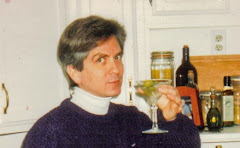
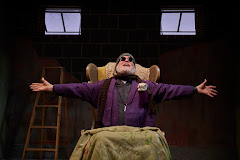




























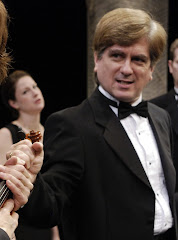
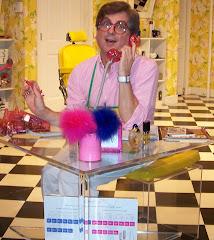
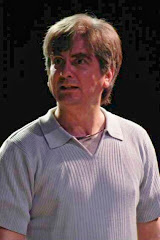
,+Olney+Theatre+Center,+2004.jpg)



,+Shakespeare+Theatre+Company,.jpg)
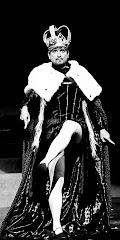

,+Warehouse+Theatre,+1999.jpg)
,+Are.jpg)
,+Everyman+Theatre,2002.jpg)
,+First+Nationa.jpg)
,+Shakespeare+Theatre+Company,.jpg)



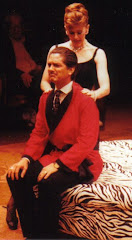

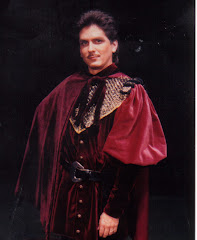
,+Granada+Th.jpg)
,+Globe+Playhouse,.jpg)
,+CSUN,+1976.jpg)
